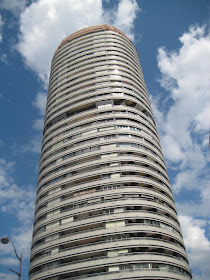 A year ago on this blog I asked whether they were any true examples of brutalist architecture in Paris. The example I eventually found in the 13th arrondissement was positively gentle alongside this multi-story car park in the suburb of Nogent sur Marne!
A year ago on this blog I asked whether they were any true examples of brutalist architecture in Paris. The example I eventually found in the 13th arrondissement was positively gentle alongside this multi-story car park in the suburb of Nogent sur Marne!

It was no surprise to discover that this rather impressive structure is condemned today and will shortly be demolished. The reasons for this removal echo the explanations given by city planners across the world who have justified similar demolitions.
"Le projet de requalification de l’entrée de ville modifiera la physionomie actuelle du quartier
dont l’esthétique au plan urbain ne valorise pas l’image et l’attractivité de Nogent" (the regeneration project for the town entrance will modify the current physionomy of a district whose urban esthetics do not promote the image and attractiveness of Nogent).
In place of this structure will be something far more banal, but this sleek architectural froideur is apparently more acceptable today. Brutalism is still deeply unfashionable amongst city planners, but will it ever make a comeback or will buildings such as this one soon disappear for ever? It would be difficult to class this car park as attractive, but such solid and uncompromising lines certainly make for interesting photo opportunities. I can't help feeling that one day we will regret the passing of this style.

























